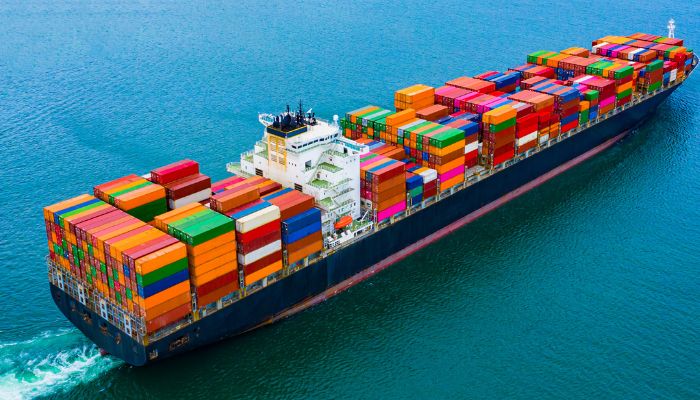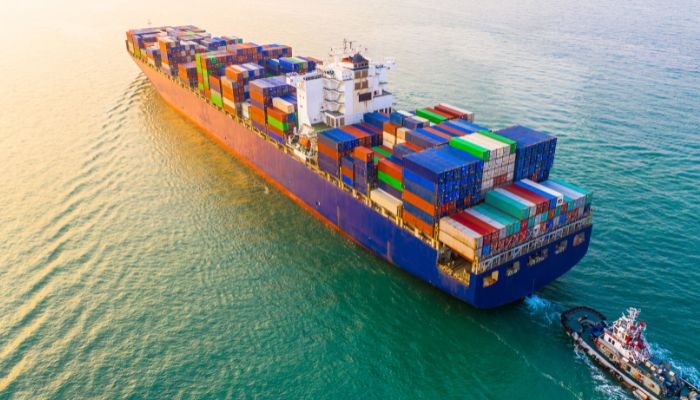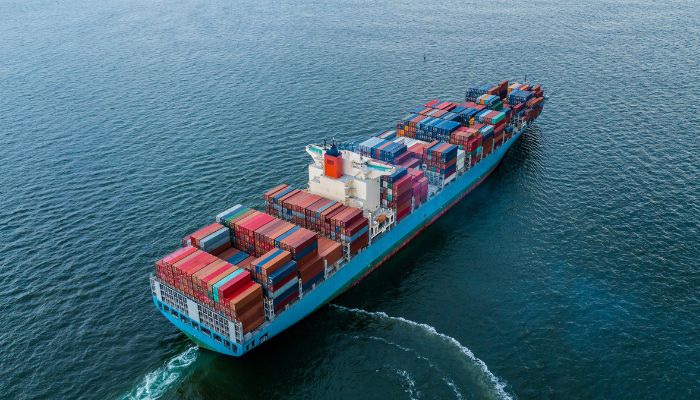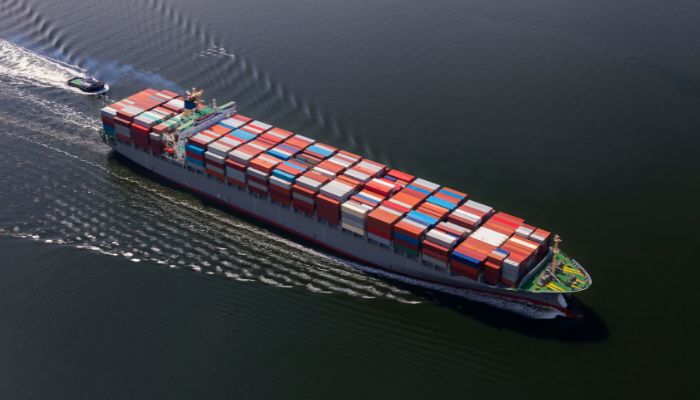Advantages And Disadvantages Of Bigger Vessels For Exporters, Shippers & Cargo Owners
In the last part of the series on the advantages and disadvantages of mega vessels for various stakeholders, we will examine the impact on Exporters/ Shippers/ BCO (Beneficial Cargo Owners), i.e. the entity owning the cargo.
Advantages
1. Lower rates: Carriers can offer lower rates by passing on the benefits of lower slot costs.
The primary rationale behind deploying mega vessels is to generate economies of scale in terms of lower slot costs, which ensures that the profit per container level is higher even if freight rates remain at the same level (as the cost base has reduced).
While Carriers can thus reap higher profits, the reality is that in an intensely competitive environment, with matters worsened due to the high degree of commoditisation in the industry (thus rendering redundant to a great extent the traditional marketing differentiators such as service quality, speed, etc.), Carriers are often compelled to pass on to the Exporter/ Cargo owner at least a certain portion of the higher profit, to undercut the competition and retain business (or grow market share).

This trend became apparent as more carriers followed Maersk Line in ordering mega vessels. The resultant capacity glut caused a disequilibrium between demand and supply, which in turn exerted downward pressure on rates. As carriers augmented their fleets with bigger vessels, they realised that demand wasn’t growing at the same pace. They also had to ensure greater volumes and higher vessel utilisation rates to make their mega vessels a commercially viable proposition.
Carriers were therefore forced to resort to aggressive pricing tactics and attempt to undercut the competition to ensure sufficient volumes to fill the bigger vessels and thus justify the massive investments in upsizing.
Exporters were the unintended beneficiaries in this scenario and were consequently able to negotiate lucrative rates, reducing ocean freight procurement spending and boosting bottom lines. An added advantage was that with the lower procurement costs, Exporters were in a position to pass on some of the savings to their own customers and attract more business (a cycle that could, in theory, be repeated until it reached the end consumer in the chain).
This trend was quite pronounced until the advent of Covid, and only the highly severe capacity and equipment shortages reversed the trend post 2020. In the new year, however, as global supply chain pressures dissipate and capacity is more freely available, we will likely see a resurgence of the trend, early portents of which can be observed in the rapidly declining average freight rates across all trade lanes (as measured by various freight rate indices), and also in the willingness of Carriers to renegotiate the higher-than-average contractual rates agreed to at the peak of Covid-related disruptions.
2. Price wars post-induction of mega vessels can help exporters negotiate better freight rates
This point is a corollary to the first point about Carriers passing on some of the savings from mega vessels to customers. The difference between the two is that while sharing cost savings is a gradual exercise in response to evolving market conditions, price wars are, in essence, a tactic adopted by bigger Carriers to aggressively grab volumes from smaller carriers, who might not have the financial resources to compete and sustain in a prolonged low freight rate environment.
It has been observed in the past that one Carrier ordering mega vessels acts as a trigger for other carriers to place orders for mega-ships due to the fear of falling behind the competition and having a disadvantageous cost structure (as they have missed out on economies of scale). Subsequently, with the influx of excess capacity, Carriers find competition intensifying as each Carrier chases more volumes to ensure high utilisation levels for their newly acquired tonnage while the market size remains steady.
In this situation, bigger Carriers often initiate price wars, offering lower rates to undercut the competition and compelling other Carriers to follow suit. Even smaller carriers are forced to cut prices to match market levels, failing which they will have insufficient volumes to sustain operations.
While this is undoubtedly detrimental to the Container Shipping industry as a whole, affecting schedule reliability levels and landing smaller Carriers in a financially precarious position (thus raising the counter-party risks for their customers), Exporters generally find the situation to their advantage, as they can leverage their considerable volumes to negotiate lower freight rates and thus reduce their ocean freight procurement costs.
This trend has been observed with each round of upsizing, and recent developments do not indicate any diminution in this propensity in the foreseeable future.
3. Lowering cargo footprint through lower emissions
One of the biggest advantages of deploying mega vessels, other than the economies of scale, is the lower carbon footprint and reduced emissions.
While Carriers primarily focus on the cost savings from bigger ships, the eco-friendly aspect is highlighted in great detail, especially in their annual CSR reports/ HSSE communications and while marketing their services to bigger customers.

Most big shippers are growing increasingly aware of their social and environmental responsibilities, making a conscious decision to reduce the carbon footprint of their end-to-end supply chains. This emphasis on ‘Green Supply Chains’ is also partly driven by consumer preferences, as studies have shown a marked consumer preference for eco-friendly products and services, to the extent of being willing to pay a premium for services with a lower carbon footprint.
Regulatory pressure also plays a great part, with national and international trade and industry organisations vigorously trying to reduce or eliminate emissions. This is done through the promulgation of appropriate rules, as well as self-regulation (at the industry or company level).
It is in this regard that mega vessels play a crucial role in helping exporters reduce the aggregate emissions of their Supply chains. By carrying a far greater number of containers, mega ships effectively reduce the carbon footprint at a per-unit level.
Besides, mega vessels are generally newly constructed; hence, their engines and structural design are more efficient, reducing bunker consumption and resulting in lower emissions.
Another factor is that mega vessels are designed to sail optimally at speeds lower than the previous generation of vessels. This also causes a significant reduction in the amount of bunker consumed (since bunker consumption rises exponentially about the vessel’s speed).
4. Helps improve Supply Chain Reliability and reduce inventory carrying costs, as greater capacity allows companies to follow the ‘Just in Time’ concept of inventory management, and also helps to cater to ad hoc / sudden increases in demand:
While increased demand for container shipping services was not the primary driver of the introduction of mega vessels (in fact, in most cases, the growth in demand has at best been steady and in line with forecasts, except in certain trades or specific cargo types), the fact does remain that the deployment of mega vessels injects significant amounts of new capacity in the market, which means that the shipping industry can cater to sharp spikes in demand.
What happens in practice is that while the capacity augmentation isn’t for the purpose of (or needs to serve the purpose of) carrying additional volumes, it does add significant amounts of capacity in the market, which in turn creates a sense of reassurance in the minds of shippers and supply chain planners, that there is surplus capacity in the market to meet their planned, and even unplanned transport requirements.
This greatly aids their supply chain planning, which can then safely assume that capacity and rates will remain stable, with little risk of sudden shortages or excessive rate fluctuations. Exporters and manufacturers are thus able to rigidly follow the ‘Just in Time’ inventory management system and minimise inventory carrying costs.
Disadvantages
1. Fewer sailings
A direct consequence of deploying mega vessels is a reduction in the number of sailings. Since a mega ship can carry more containers than a smaller one, fewer vessels are required to transport the overall volumes on the corridor in question, resulting in fewer sailings (unless there is a corresponding increase in volumes, which generally is not the case).

To revisit the example mentioned in the previous article, if a port receives three calls every week, from vessels of 5,000 TEU capacity each, after upsizing, it might be served by two ships of 7,000 TEUs each, in which case the number of vessel calls/ services (which are in essence the products offered by the shipping line to the exporter) reduce from 3 to 2, with a corresponding drop in the frequency of services, from an average of once every two days in the earlier scenario to once every three days after bigger vessels start plying on the route.
The customer thus has fewer sailings to choose from, which impacts their supply chain and transport planning, as they have fewer sailings around which to plan their cargo movement.
2. Fewer direct services
Another inevitable consequence of the introduction of mega vessels is a decrease in direct services/ port calls. As explained previously, mega ships require deep draught, better infrastructure, and bigger container handling equipment (generally, only the bigger ports can provide). Also, mega vessels are primarily suitable for ports with relatively larger volumes, which are the bigger ports.
This means that it is neither commercially viable nor operationally feasible for mega vessels to call at smaller ports (which lack the requisite draught/infrastructure and do not have sufficient volumes to fill the capacity allocated on that vessel to the particular port).
In such cases, Carriers are constrained in the number of ports their vessels can call at and, therefore, increasingly implement the hub and spoke model, where the mega-ship calls only at the bigger ports on the route.
Containers destined for smaller ports in the region are then discharged at these big ports and thereafter transhipped to the smaller ports onboard feeder vessels. At the origin, too, since the mega vessel will call only at certain primary gateway ports, cargo from other/ smaller origin ports is transported to the hub port on feeder vessels and, from there, is loaded on the mother vessel.
This implies that the number of direct port calls/ port corridors is severely curtailed, and more containers are transshipped. This increases container transit times, meaning that importers and buyers will have to wait longer for their cargo, leading to higher inventory carrying costs while also waiting for a longer period to convert stock into cash. Besides, the additional time the cargo spends at the port increases the risks of damage, obsolescence, theft, pilferage etc., which is an added burden on exporters and importers.
3. Lesser choice
The obvious outcome of the combined impact of the first two factors mentioned above is that exporters and buyers have a lesser choice regarding transport services/ products. Instead of multiple port-to-port combinations, they are now compelled to select from amongst a handful of corridors, regardless of the distance from their intended origin and destination locations.
Exporters also have to bear the additional expense of transport from their pickup and drop-off locations until the scheduled ports of call.

In most cases, manufacturers have built their supply chains around ports proximate to their manufacturing facilities. With a reduction in the choice of transport options, they will be forced to reconfigure their supply chains, incurring additional expenses and hampering efficiency (at least in short to medium term).
From the exporters’ perspective, these developments leave them deprived of choices, with a curtailment of available options.
Where they earlier had a choice of various sailing dates (since there were more services), and hence missing the cut-off for one vessel would mean a wait of just a couple of days; with fewer sailings, they have lesser options to plan and longer delays in case they miss the cut-off for one vessel.
Similar is the case with fewer direct products. Where the customer could earlier select an origin or destination port that was the closest to his premises (or well-connected to it), under the hub and spoke model now gaining prevalence post the introduction of mega vessels, exporters have to arrange alternate modes of transport (be it rail, road or barge) to the main port of call.
This inevitably leads to higher costs and effort for exporters and importers, besides an increase in delivery and turnaround times.
4. Greater consolidation and cooperation in the shipping market
With each carrier ordering its own mega vessels, and the resultant pressure on freight rates and utilisation levels, the container shipping industry has become fiercely cutthroat. In this scenario, two common strategies adopted by Container Carriers are consolidation and cooperation (as opposed to competition).
The former is exemplified by the numerous mergers and acquisitions that the industry has witnessed since the early 2000s, while the latter strategy is manifested in the form of Container Alliances.
As Container Carriers became cognizant of the necessity of having mega vessels in their fleets and also were mindful of the highly competitive environment, they started exploring the feasibility of acquiring smaller competitors to rapidly build scale and augment their fleets, both in terms of overall capacity and the number of mega vessels.
An example was the acquisition of UASC by Hapag-Lloyd in 2016. Hapag-Lloyd was bigger than UASC but did not possess mega vessels, while UASC had, after embarking upon a fleet modernisation programme in the early 2010s, in their possession a sizeable number of big vessels (big by the prevailing standards of the time) but was facing financial difficulties (as per market analysts, but difficult to ascertain, as UASC didn’t publish accounts). Thus, the merger was a win-win situation for both entities, and Hapag-Lloyd could instantly build operational scale and acquire bigger vessels.
Container Alliances have been present for over two decades now. Shipping is primarily a game of scale, and bigger fleet sizes put carriers in a superior position vis smaller competitors. Smaller Carriers have, therefore, typically formed alliances to level the playing field by pooling assets and thus bridge the gap in capabilities with bigger carriers.
Since mega-vessel induction, however, container alliances have served an even more critical purpose. In the absence of a commensurate increase in demand for containerised shipping services, it became difficult for individual carriers to fill their mega vessels (even for the bigger pages), so they formed alliances to jointly serve primary trades, wherein each carrier would commit a certain number of vessels, with the other Alliance members taking space of this vessel (generally in the proportion of the overall capacity that they had contributed to the service).
This benefitted all Carriers since they increased the probability of filling the vessel and thus mitigated the commercial risk. The success of this strategy is attested to by the fact that even a carrier like Maersk Line, which for a long time had a policy of operating standalone services (and not being part of any alliance), has been a part of a container alliance (or coat least -operated on a limited scale) for the better part of the decade since 2010.
The direct and indirect consolidation in the container shipping industry has moderated the flow of capacity, thus causing an abatement in the tendency to compete on price. For exporters, this means a slight decline in their bargaining power.
For information, the formation of container alliances is prima facie not tantamount to price collusion and is generally within the confines of all applicable jurisdictions. Regulatory bodies in the USA, EU and other countries have investigated allegations about the formation and operation of container alliances being detrimental to fair competition and distorting free market dynamics; but did not find adequate and robust evidence to ban container alliances (except in isolated instances, where regulators had stopped alliances from operating on specific trade lanes as the combined entity would have too high a market share or when China disallowed the proposed O3 alliance in 2013 – which was the precursor to the 2M alliance – as the combined market share of the three alliance embers exceeded the threshold limit for the trade lane).
5. Potential monopoly or oligopoly due to concentration of capacity
The concentration of capacity can create a monopolistic or oligopolistic market, where a handful of big players/ alliances control a large proportion of the available capacity.
While, as explained above, the operation of such alliances is well within the framework of relevant anti-competition laws, there does exist the possibility of a monopoly being created, especially in niche markets or when two strong players merge/ co-operate.

Such eventualities are obviously detrimental to free market dynamics and undermine the interests of consumers and shippers, wherefore Competition authorities in the relevant jurisdictions generally do tend to step in and ensure that an individual player does not control an inordinately high proportion of capacity (and that the gap between the dominant player and other players is not excessive).
This was observed during Hapag-Lloyd’s acquisition of CSAV in 2014 when the European Commission flagged the combined entity’s market share on North Europe to Central America/ Caribbean/ West Coast of South America trade lane. Therefore one of the pre-conditions imposed for approving the acquisition was that CSAV withdraws from two consortia.
Similarly, when Maersk Line acquired Hamburg Sud, the European Commission’s preliminary evaluation concluded that the market share of the combined entity in the South America and Middle East trades would have been on a scale large enough to establish a dominant position (on those trades), wherefore approval for the proposed acquisition was contingent to Hamburg Sud withdrawing from five consortia.
You might also like to read-
- Advantages And Disadvantages Of Bigger Vessels For Port And Terminal Operators
- What Are One-Trip Shipping Containers Or Single-Use Shipping Containers?
- What is International Maritime Dangerous Goods Code (IMDG)?
Disclaimer: The authors’ views expressed in this article do not necessarily reflect the views of Marine Insight. Data and charts, if used, in the article have been sourced from available information and have not been authenticated by any statutory authority. The author and Marine Insight do not claim it to be accurate nor accept any responsibility for the same. The views constitute only the opinions and do not constitute any guidelines or recommendations on any course of action to be followed by the reader.
The article or images cannot be reproduced, copied, shared, or used in any form without the permission of the author and Marine Insight.
Do you have info to share with us ? Suggest a correction

About Author
Jitendra has over 20 years of international experience in the Container Shipping, Ports and Logistics industry, spanning 3 diverse geographies, wherein he has been involved in the commercial and strategic aspects of the container business.
Latest Maritime law Articles You Would Like:
Latest News
- What is the Purpose of DG Shipping?
- What are Logistics Risks?
- How Port and Terminal Operators Can Control Emissions?
- Minimum Quantity Commitment (MQC) and Liquidated Damages in Container Shipping: Concept and Relevance
- MARPOL (The International Convention for Prevention of Marine Pollution For Ships): The Ultimate Guide
- The Ultimate Shipping Container Dimensions Guide
Subscribe To Our Newsletters
By subscribing, you agree to our Privacy Policy and may receive occasional deal communications; you can unsubscribe anytime.















